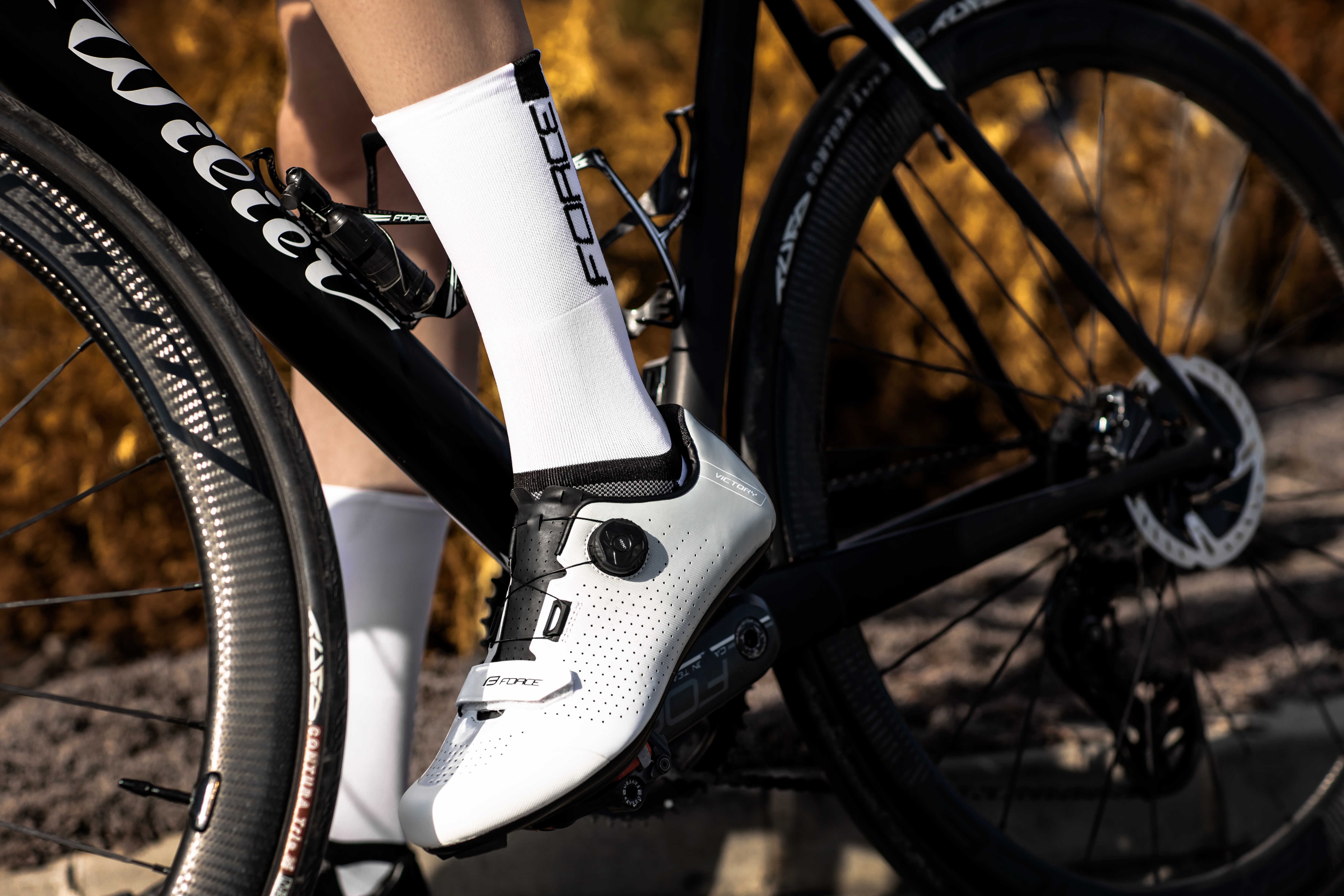1. WHY IS THE CYCLING JERSEY SHORTER IN THE FRONT?
You are trying on a jersey and you think they forgot to add a few centimeters to the front? It's not a manufacturing defect, but a practical fit solution that you'll appreciate once you've taken up a cycling stance. This way you won't have an unnecessary amount of fabric on your stomach that's going to weigh you down when you pedal. The shorter lower edge allows for a greater range of motion, reducing the risk of friction and skin irritation, and also increases the aerodynamics of the rider. Overall, cycling clothing is cut to fit you when you ride, not when you look in the mirror. You'll especially feel this with jackets. When standing up straight, a jacket will often pull at your shoulders, but once you lean over the handlebars, you'll find it fits.
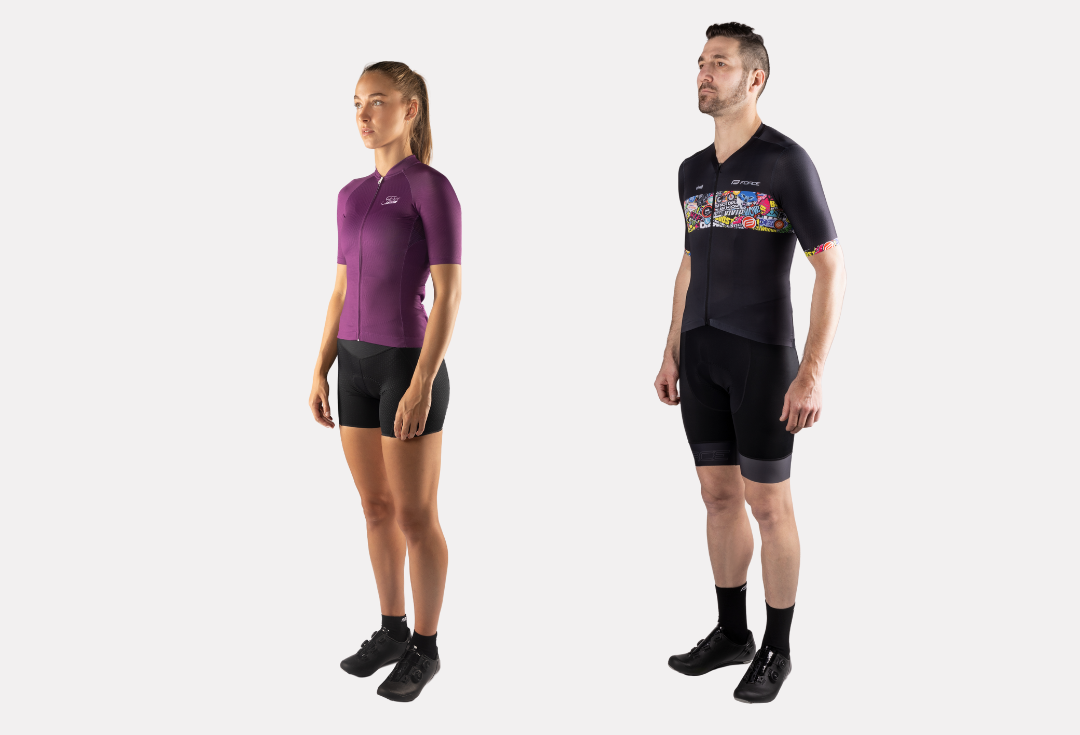
The jerseys that are more focused on hobby cyclists are not that much shorter in the front. You can find such jerseys in our Blue Line.
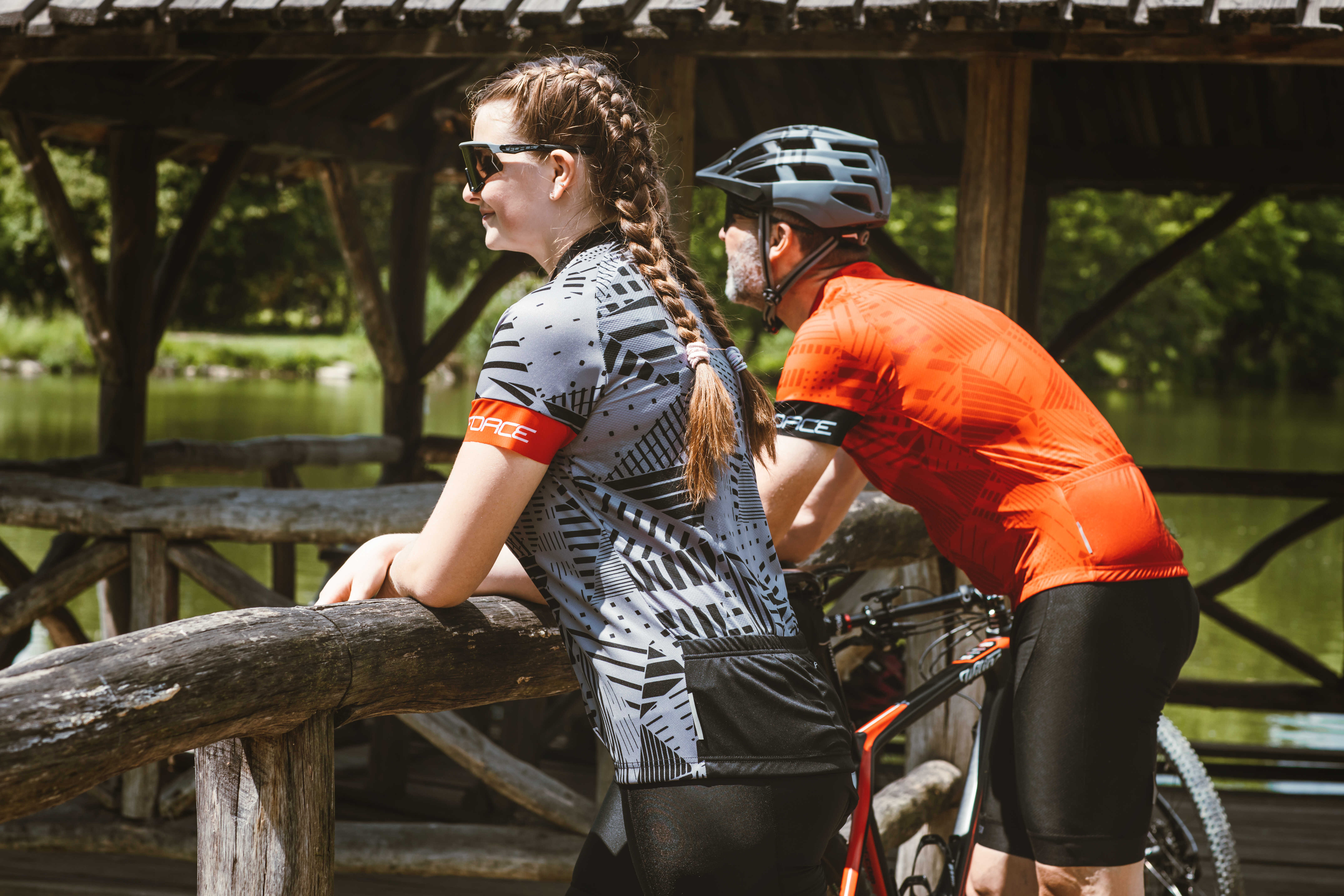
2. SHOULD I RIDE WITH A BIKE PAD?
Comfort, comfort, comfort. Well, it depends on the pad, of course. An ill-fitting pad is sometimes worse than no pad. The pad shouldn't move around too much, so it's important that your bike shorts and pants fit really well. The pad needs to fit snugly against your butt and crotch. A good pad will reduce friction between the skin and the saddle, preventing irritation and pain. It absorbs sweat and keeps your sensitive areas dry. It reduces vibration and shock, which in turn leads to better performance and less fatigue when riding. And most importantly, your glutes won't hurt too much.
We are committed to improving the pads, and you can already find new and improved pads on many models for even more comfort. Find out more in our article.
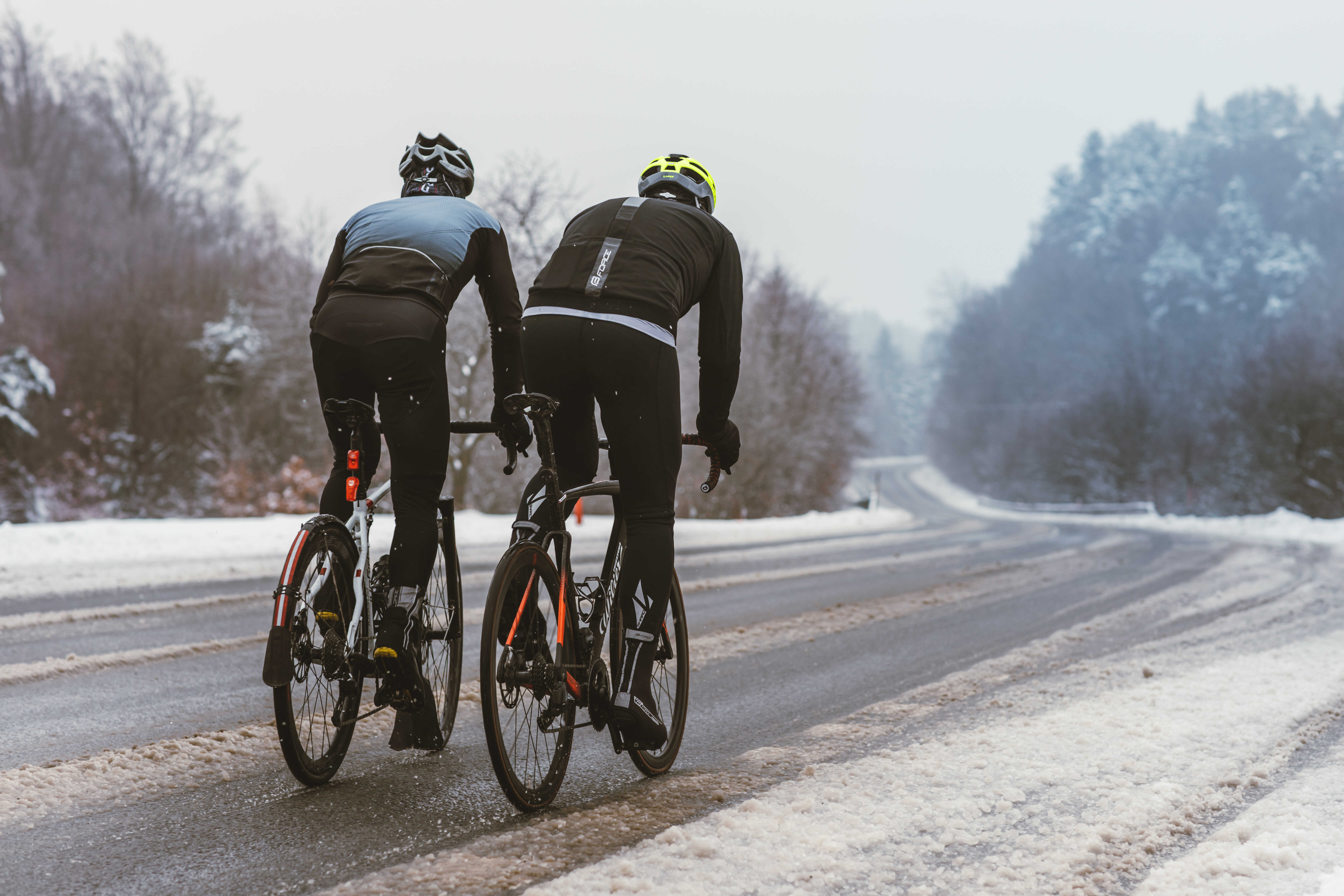
3. TO RIDE WITH OR WITHOUT UNDERWEAR?
We have one word for you: bike rash. You just don't want it. Plus, if you have a good bike pad, underwear is a hindrance. The pad is designed to prevent friction, forming of bacteria, and to wick away sweat. So riding without your underwear is not a fad, it's a necessity.
4. WHY SHAVE YOUR LEGS ON THE BIKE?
With their perfectly shaved legs, cyclists could very often be Gilette commercial stars. But it's not just about aesthetics, shaved legs also have a practical meaning on a bike. From such detail as reducing air resistance - yes, even such extremes are thought of 😊 - to the hassle of sweating, when shaved legs reduce perspiration and thus improve comfort while cycling. The main reason to ride with smooth legs is to reduce the risk of injury. Shaved skin is much easier to care for and keep clean. In addition, this prevents unwanted depilation when the bandaid is ripped off.
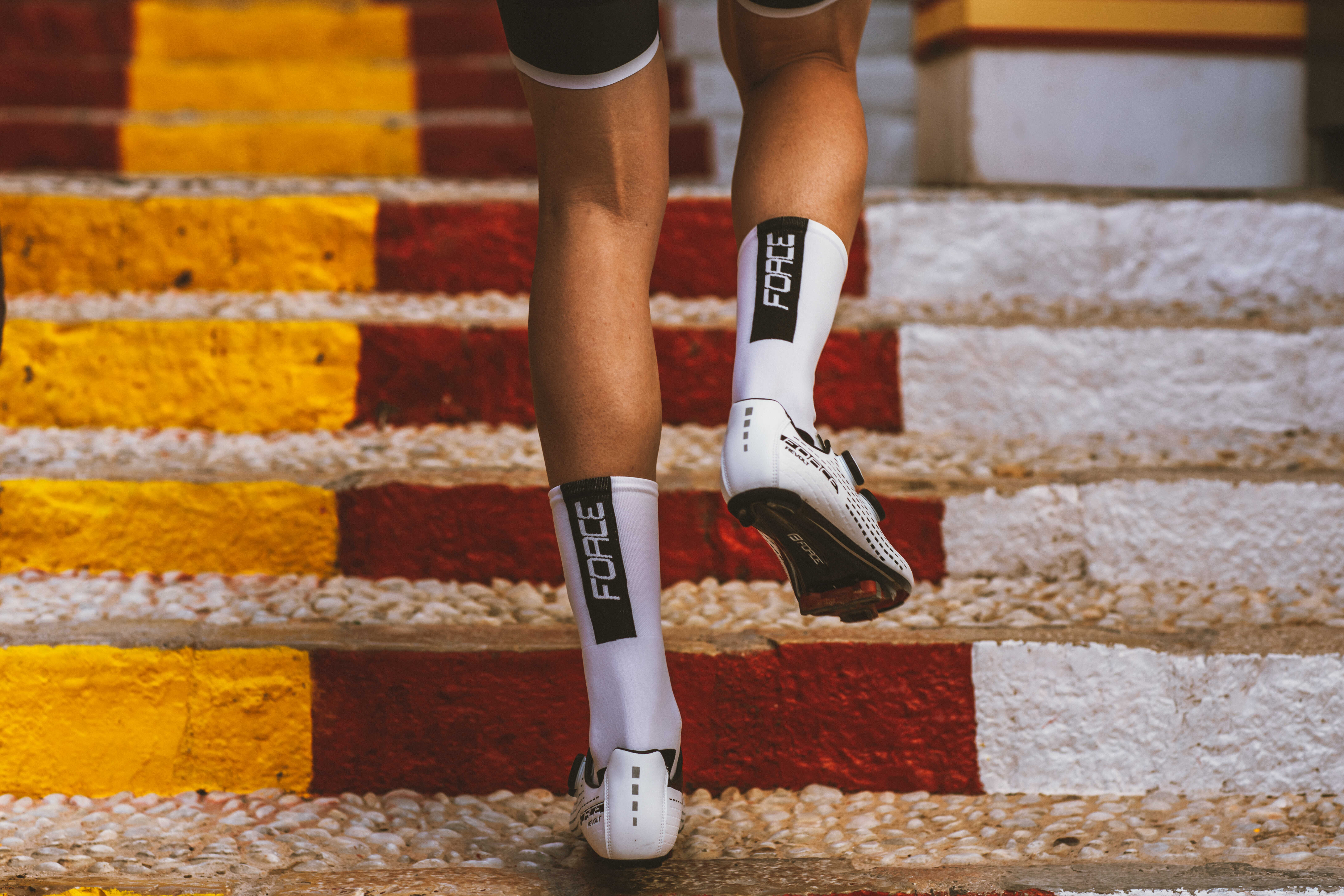
5. HOW TO WASH AND DRY BIKE CLOTHES?
Unless you're a fan of naked bike rides (which are very popular in England), your bike clothing is a big part of the fun. So it definitely deserves special care. How do you make your cycling clothes last?
- First, always read the instructions on the label. This will avoid unintentional damage.
- Wash your clothes ideally as soon as you return from your ride. Preferably in cold water, by hand, and with neutral soap. If you don't have time, at least give your clothes a good airing.
- Functional fabrics are sensitive to hot water, so never use water above 30º C. If you are doing the laundry in a washing machine, set the speed to low (maximum 800), turn your favorite pieces inside out, and avoid fabric softeners and bleach. Hang the clothes immediately after washing, preferably flat or on a hanger. And keep the iron hidden in the cupboard.
- Watch out for velcro fastenings, especially on gloves, which must be closed, otherwise you can part with your gloves after one wash.
- Be sure to wash your cycling shorts and trousers, which should be worn sharp, after each use, and watch out for washing powder so it doesn't irritate your skin. Also, never hang these pieces by the suspenders, they could pull up.
- Our tip is to wash your clothes in a protective bag so you don't get your favorite piece snagged in the washing machine.
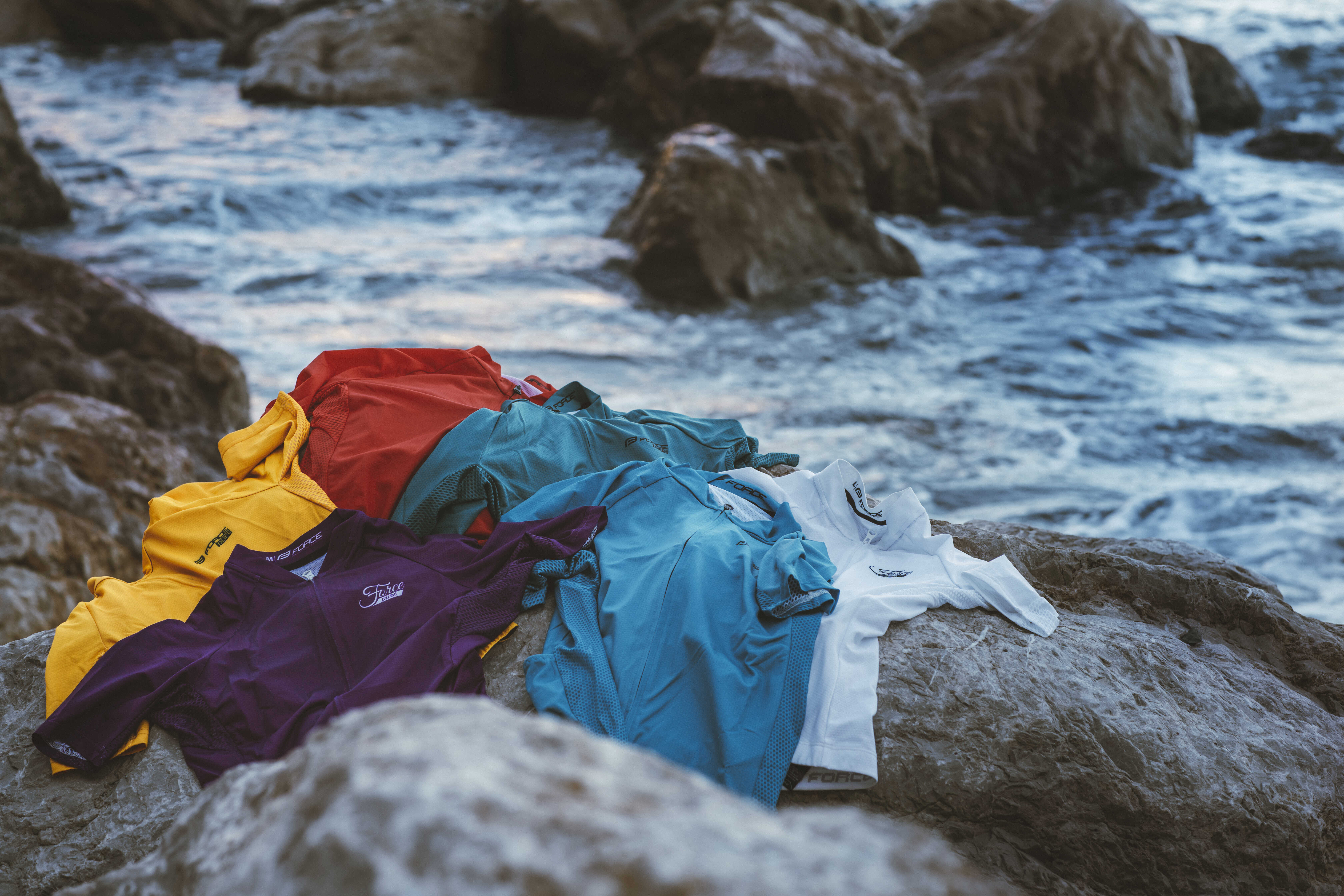
6. SHOULD I PUT MY SUNGLASSES OVER OR UNDER MY HELMET STRAPS?
I don't think we have a single answer to this question, some people wear sunglasses under their straps and some wear them over their straps. But the fact is that if you put your sunglasses over the straps, you protect yourself and your sunglasses in the event of an accident. The sunglasses will fly off so easily and won't hurt your face. Plus, the helmet straps should sit tight on your face and the sunglassess underneath would lift them up unnecessarily.
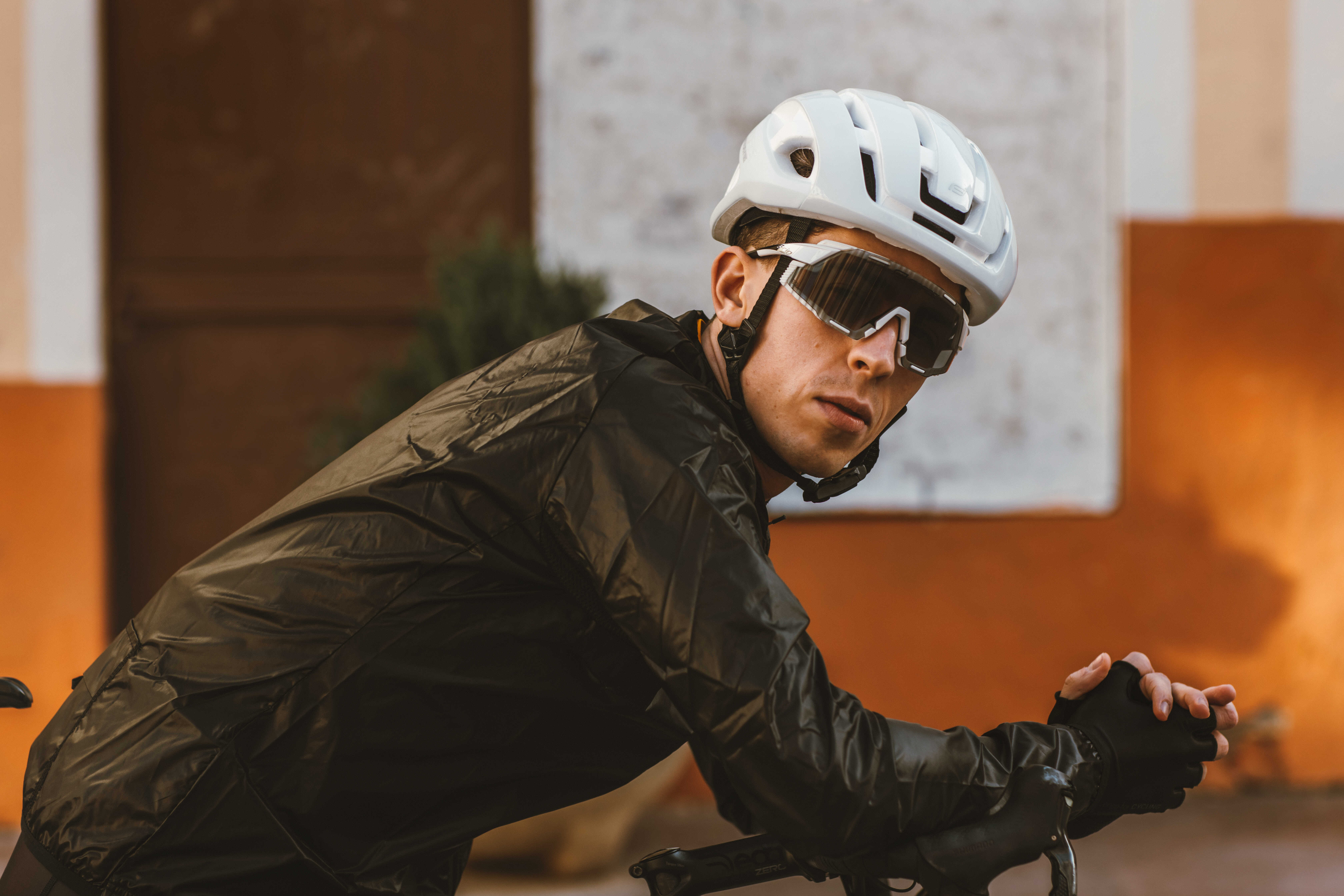
7. SHOULD I WEAR COMPRESSION SOCKS?
And again, there is no right answer. Nowadays, most cyclists favor taller socks and leave compression socks for hiking or long-haul flights. Unless you're riding intensely all day, and need to reduce swelling or improve blood circulation, feel free to leave the compression socks at home.
8. HOW TO ADJUST MY HELMET?
You may laugh at this question, but we have seen a lot on our rides. From a helmet that's not on at all to a helmet that's on backward. Even the best helmet won't protect you if it's not fitted properly.
Here are some examples of ill-fitting helmet:
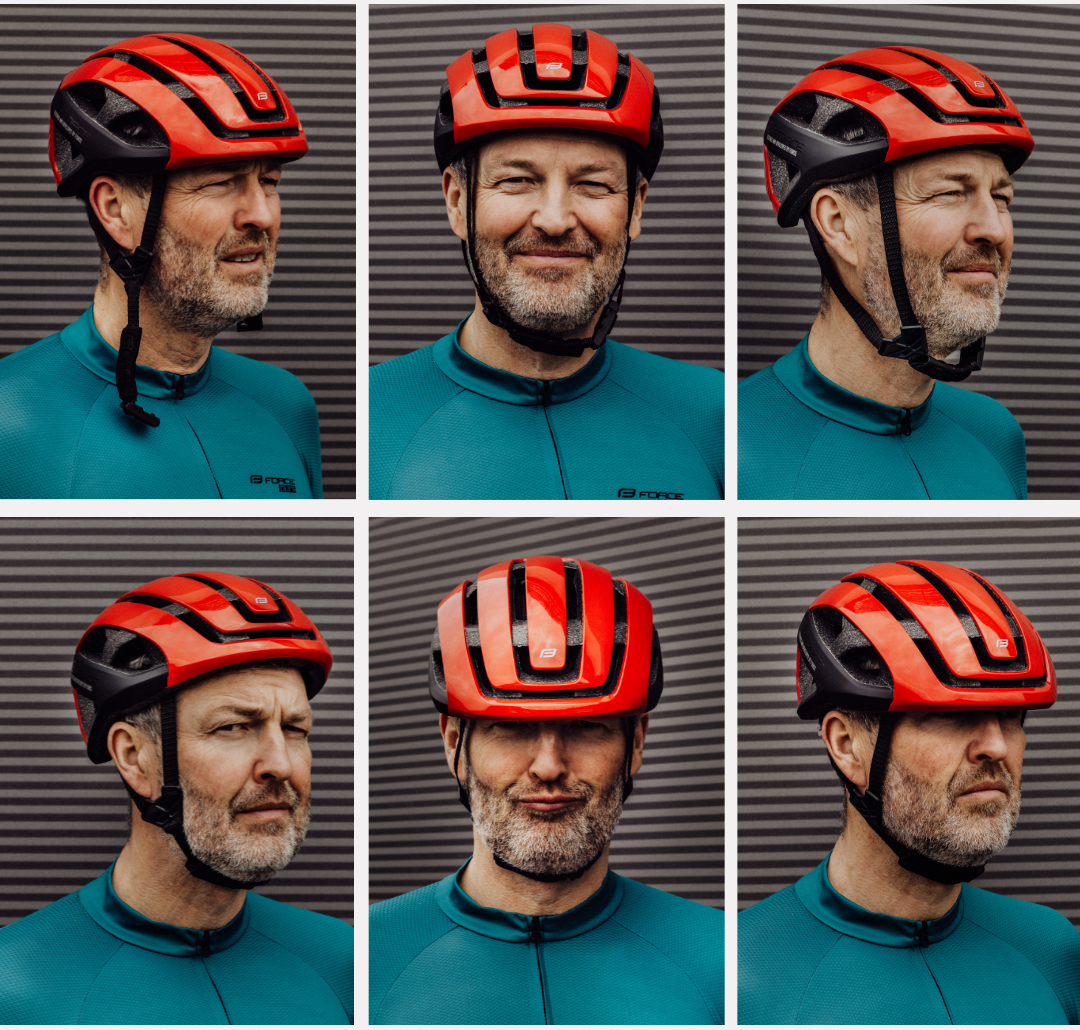
How to fit your helmet?
- Of course, choosing the right size is where it starts. The helmet should sit one to two fingers above the eyebrows in the front.
- Once you have a model that fits perfectly, start by tightening the rear wheel. This should ensure that your helmet doesn't slide forward or backward as you move.
- And then comes the straps. A lot of people forget about them and ride with straps that aren't tightened at all and don't fit their ears. The sides should form a "V" shape and the ear should be in the middle of that letter.
- There should be just enough room for one finger under the chin when the strap is tightened.
And this is how it should look:
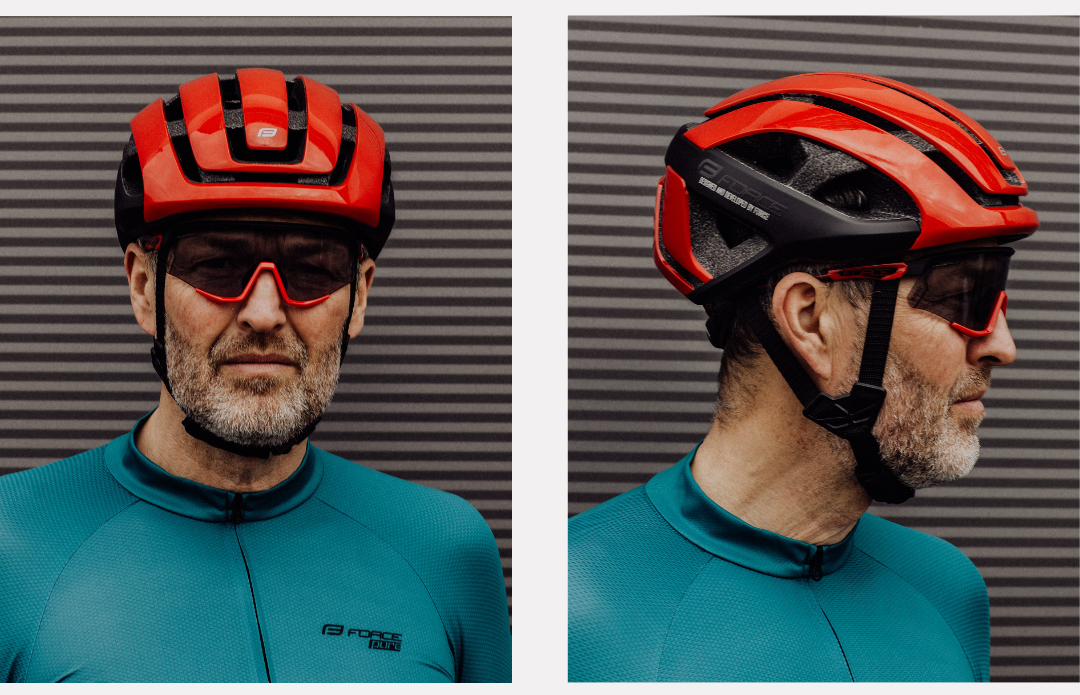
9. HOW TO RIDE WITHOUT A BACKPACK?
If you're going on a day trip and taking the whole family and snacks for everyone, you probably can't avoid a backpack. Although a clever bag system ensures you can leave your backpack at home. Check out our article on bikepacking for inspiration.
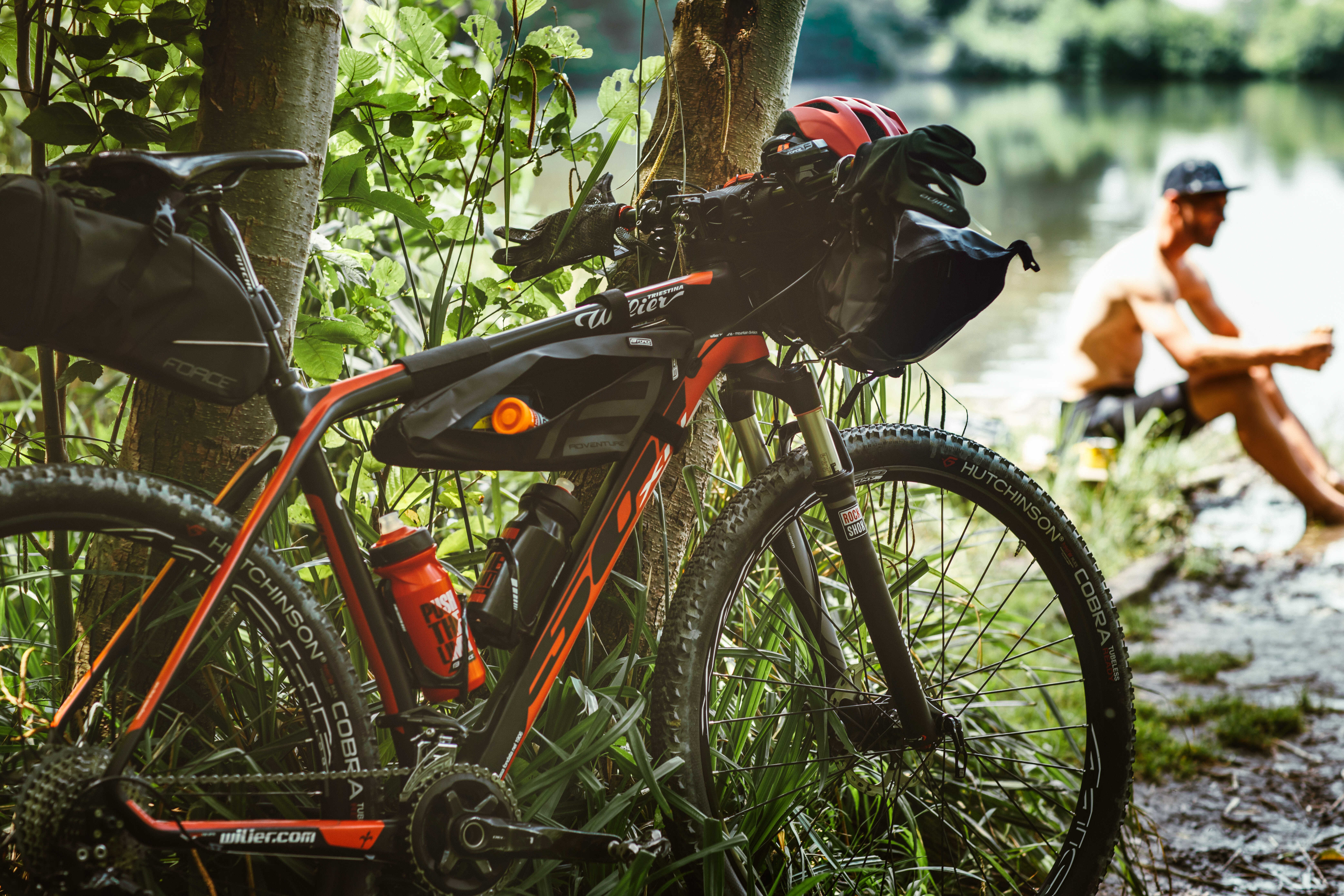
But you don't usually see road cyclists with backpacks. How do they do it? You can fit almost everything you need in your jersey pockets - a light windbreaker, an energy bar, and even a small hose. You can easily stash your puncture gear and essential tool kit in the saddlebag, and clip a spare inner tube with the WHIP strap.
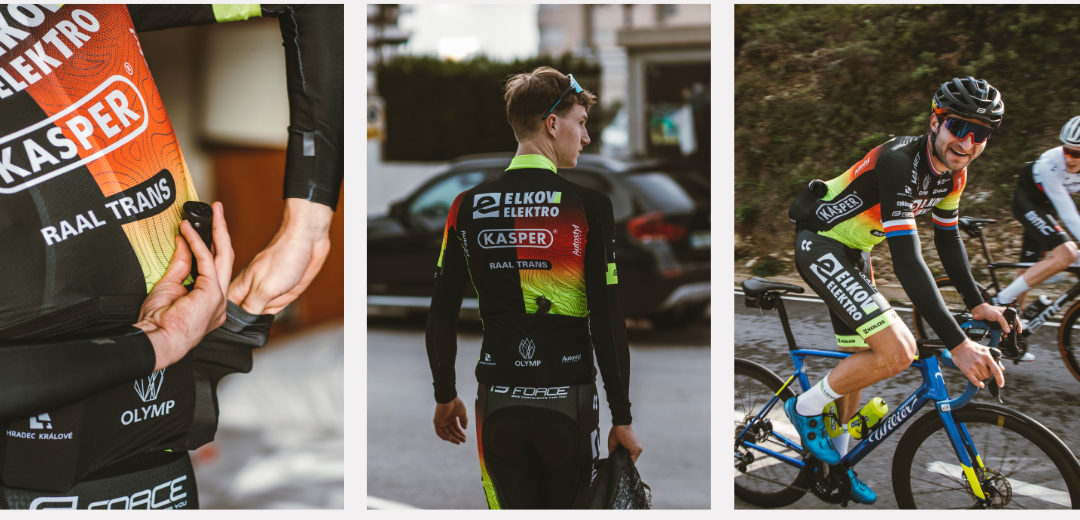
10. SNEAKERS OR CYCLING SHOES?
If you're serious about cycling and want to push yourself, then cycling shoes are essential for your ride - they'll give you more power, comfort, and better stability and control over your bike. By having a stiffer sole, more power is transferred from your foot to the pedal, making each swing more efficient. Another benefit of cycling shoes is that they provide greater safety, for example, when riding in the rain, cycling shoes do not slip on the pedal, unlike sneakers.
The first time you ride with cycling shoes, watch out for falls when you stop. But it's nothing embarrassing, it's happened to all of us 😊 Also, beware of walking down the stairs in cycling shoes. It's easy to slip, so if you have nothing to grab onto when coming down the stairs, you'd better take your shoes off.
